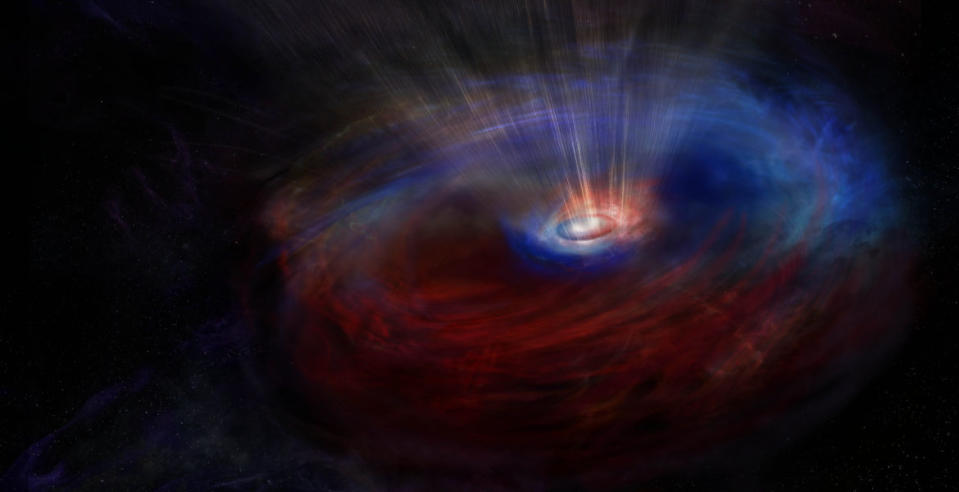When you purchase through links in our articles, Future and its syndication partners may receive a commission.

Image credit: NASA/ESA
Astronomers have discovered that large streams of cold gas created by collisions between galaxies in the early universe may have created some of the most monstrous star systems.
The formation of ancient gigantic galaxies that bulge like footballs compared to our relatively flat spiral galaxy, the Milky Way, has baffled astronomers for decades.
Now a team led by scientists from the University of Southampton may have scored a touchdown in this search. They believe their research could finally solve this long-standing galactic mystery.
“The collision of two disk galaxies caused gas – the fuel from which stars are formed – to sink towards their center, creating trillions of new stars,” team member and researcher Anna Puglisi of the University of Southampton said in a statement. “These cosmic collisions occurred about eight to twelve billion years ago, when the universe was in a much more active phase of its evolution.
“Our findings bring us closer to solving a long-standing mystery in astronomy that will redefine our understanding of how galaxies formed in the early universe.”
The team’s research was published on Wednesday (December 4) in the journal Nature.

This cool space wallpaper features a composite view of the giant elliptical galaxy NGC 1399. The stellar component, as observed at optical wavelengths, is shown in white in the center of the image.
The team achieved their breakthrough with the Atacama Large Millimeter Array (ALMA). ALMA is the largest astronomical project in existence and consists of 66 radio antennas in the Atacama Desert in northern Chile.
The team collected high-quality observations of many distant galaxies using ALMA and data from the A3COSMOS and A3GOODSS archival projects. In particular, they analyzed over 100 galaxies that are currently in the process of intense star formation.
Team leader Qing-Hua Tan from the Purple Mountain Observatory explained that the project used a new technique to study the light distribution of distant and extremely bright galaxies.

a black hole in space surrounded by colorful gases
“This is the first real evidence that spheroids form directly from intense episodes of star formation in the cores of distant galaxies,” Tan said. “Astrophysicists have been trying to understand this process for decades.
“These galaxies form quickly – gas is sucked in to feed black holes, triggering eruptions of stars that form 10 to 100 times faster than our Milky Way.”
Similar stories:
— How do some black holes get so big? The James Webb Space Telescope may have an answer
– The brightest quasar ever seen is powered by a black hole that eats “a sun a day.”
-Record breaker! The Milky Way’s Most Massive Black Hole Is a Sleeping Giant Lurking Near Earth (Video)
The team will now combine their findings with data collected by the James Webb Space Telescope (JWST) and the Euclid satellite.
This will help them map the populations of stars within the target galaxies to shed further light on the mystery of how giant galaxies form.
“This will give us a more complete picture of early galaxy formation and deepen our understanding of how the universe has evolved since the beginning of time,” Puglisi concluded.

